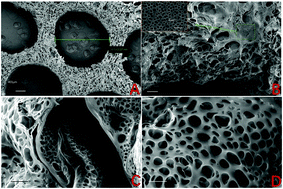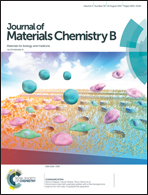A novel biomimetic scaffold with hUCMSCs for lumbar fusion
Abstract
Discectomy and lumbar fusion are common clinical approaches to treating intervertebral disc (IVD) degeneration with the aid of autologous bone and/or biomaterials. Biomaterials are considered suitable if they are biodegradable and can guide tissue regeneration. These features are necessary for total IVD removal, when it degenerates, as lumbar fusion treatment, avoiding secondary damage caused by the use of autogenous bone. In this work, a novel biomimetic porous chitosan/poly(L-lactic acid) scaffold with human umbilical cord mesenchymal stem cells (hUCMSCs) was applied in lumbar fusion. Hierarchically porous chitosan scaffolds were prepared using molds, porogens and freeze drying, and then poly(L-lactic acid) networks were distributed throughout the interior scaffold to enhance mechanical strength. We conducted cell culture in vitro and animal experiments in vivo. The scaffolds were incubated in hUCMSCs medium and co-cultured for 8 days, and then implanted into half-destroyed IVDs in New Zealand rabbits. The results show that scaffolds with hUCMSCs had greater ability to guide disc regeneration than the blank control and autologous bone, as determined using X-rays, computed tomography, and histologic analyses. Findings confirmed the role of hUCMSCs stimulation in bone-tissue healing and IVD regeneration. This hMUMSCs-based approach, together with the strategy proposed for incorporating osteoblastic cells into scaffolds that promote endogenous or synthetic repair mechanisms, may then be used to develop strategies for the stem-cell-based healing of other acute injuries and chronic diseases.



 Please wait while we load your content...
Please wait while we load your content...